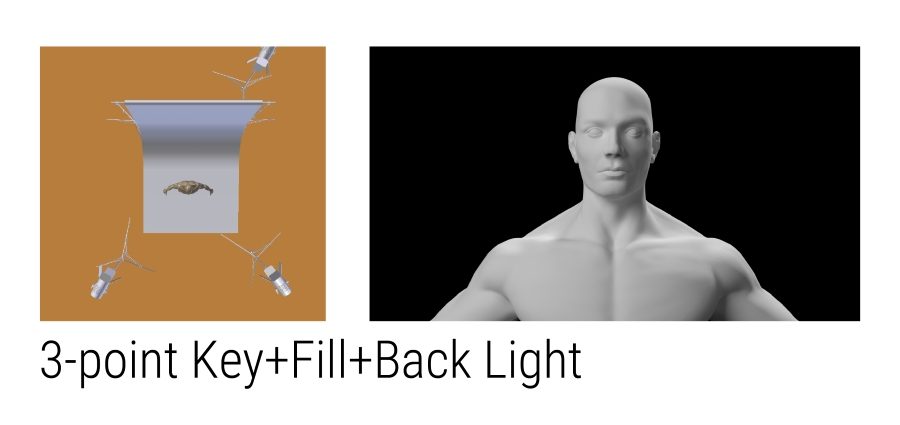This video glossary covers the terminology and defines the meaning of common video terms related to cameras, codecs, lighting, film set lingo, post-production workflows, and everything else you ever wanted to know about film and video production.
Three-point lighting refers to a lighting setup that has three points. Traditionally considered the standard for film and video cinematography, three-point lighting always includes a key light that directly faces the subject, a backlight that lights the subject from behind, and fill light (or multiple fill lights) on the side to balance out the light from the key to control for contrast and shadows.

For more on 3-point lighting have a look at our article Video Lighting Guide Part 3: Basic Lighting Setups.
Tilting shots are shots where the camera is angled up or down from a stationary position. Unlike crane shots where the camera is physically moving up and down, tilting shots happen while the camera is attached to a tripod and is physically moved upward in angle or downward in angle by the operator.
Tilting shots are great for revealing important information hidden in plain sight, like when you tilt down to reveal a character hiding underneath a table, or tilt up to show a leak in a water main above the characters’ heads that’s about to blow.
Timelapse is an effect where you speed up footage to imply the passing of time. Essentially the reverse of the slow-motion effect, in order to create time-lapses, you will want to capture longer stretches of footage over longer periods of time.
To create this effect, most digital cameras have a built-in timelapse feature that records at a slower rate - usually in low power mode to save battery strength, which is particularly useful for shooting overnight time-lapses.
Tracking shots refer to shots where the camera moves alongside a subject, following them along a set track.
Tracking shots are often created using a dolly, which is a film equipment term we’ll get to in a minute, in which case an actual track is set up for the dolly to follow. However, shots taken via handheld, slider, Steadicam, gimbal, or glidecam that follow a subject or multiple subjects in action throughout a scene are still considered tracking shots.
A tripod is a three-legged stand that you attach your camera to in order to keep it stationary and stabilized while shooting. Tripods are also often referred to as “sticks.” Another stationary camera stabilizer, monopods are tripods with only one leg. Monopods are used in situations where a tripod is impractical, or if used with a counterbalance, can also be used for camera movements like panning, tilting, or even tracking.
Have a look at our in-depth guide Six Things You Need to Know Before Buying a Tripod for Video. And if you're looking to buy a tripod, you should read 10 Best DSLR Video Tripods For Beginners, Travel, And Pros.
Tungsten lights are warmer type light bulbs that create a more orange look. They are defined as tungsten by the tungsten wire filaments that power them.
Since they are more red and orange looking, they have a warmer color temperature - somewhere around 3200 Kelvin.
Tungsten bulbs are most commonly used in everyday light sources like desk lamps or ceiling lights, and thus have a more “homey” feeling to them, as opposed to cooler color temperature LED lights.
